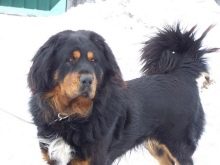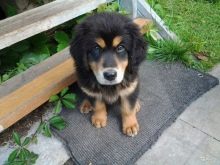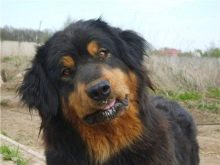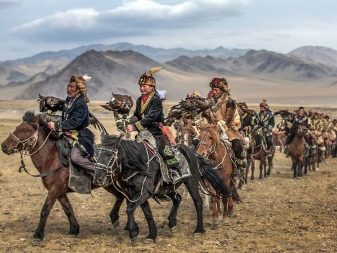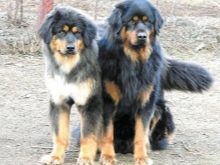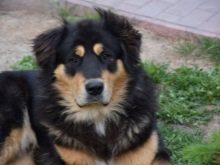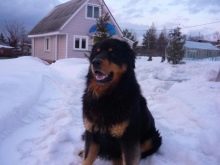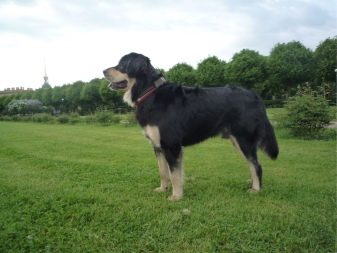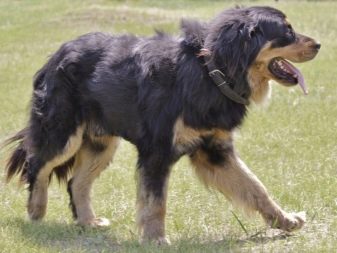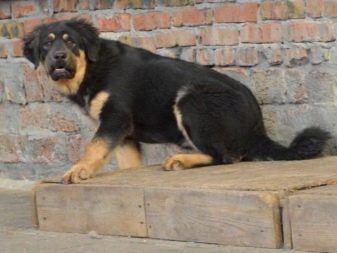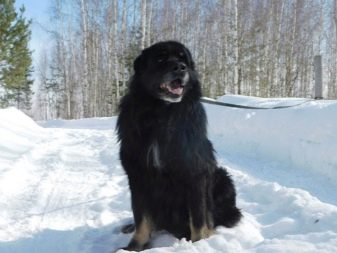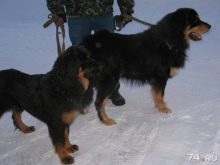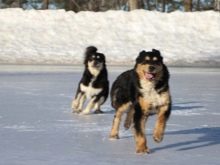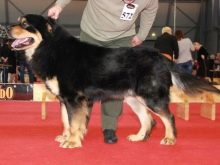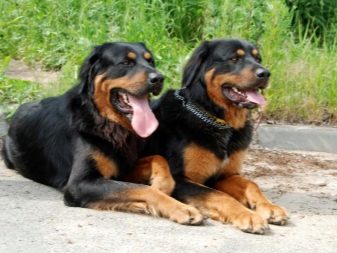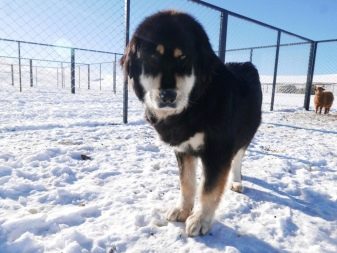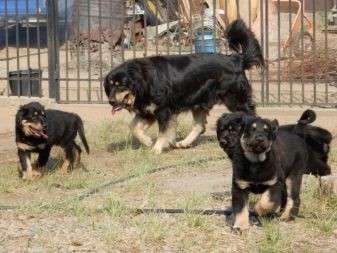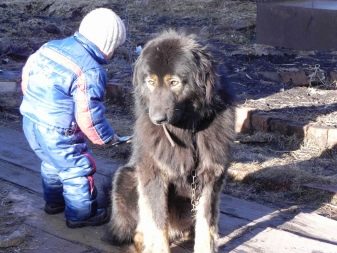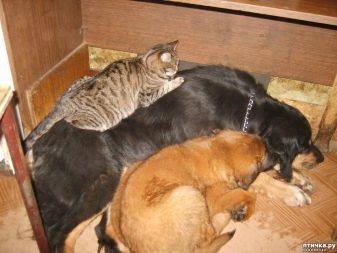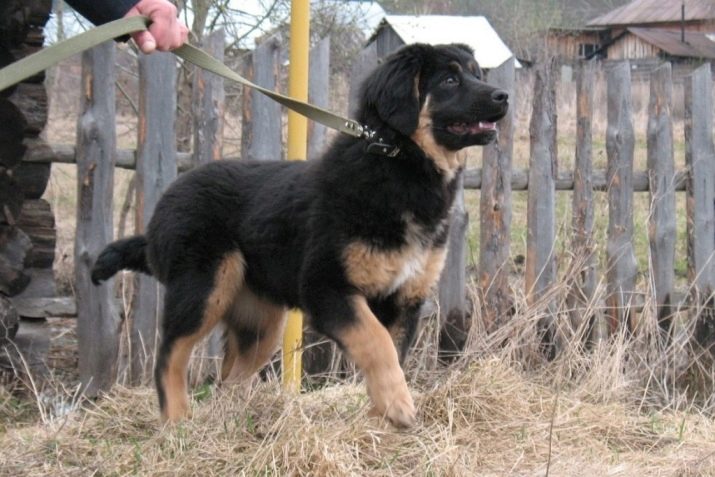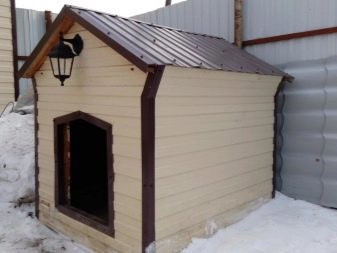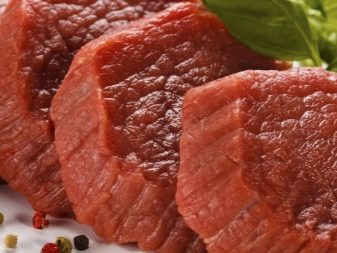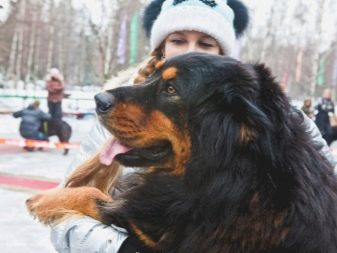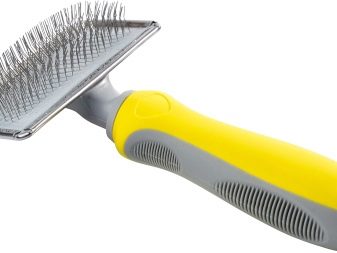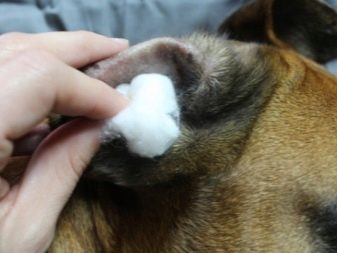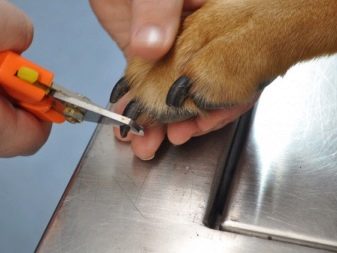Buryat-Mongol wolfhounds: history of the breed, temperament, choice of names, the basics of care
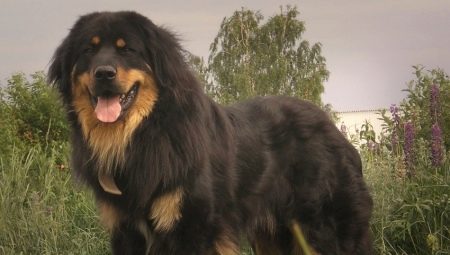
There are breeds of dogs that stand out by their centuries-old friendship with man. Among such ancient representatives of four-legged friends should be called the Buryat-Mongolian wolfhound, whose unique characteristics are valued by cynologists and breeders to this day.
Origin
One of the most ancient dog breeds is considered to be the Buryat-Mongol wolfhound. The ancestors of modern representatives of these animals lived together with the nomadic tribes of Mongolia and Buryatia, accompanying them, serving, playing the role of not only a shepherd’s dog, but also acting as a serious defender for man and his home, protecting them from predatory raids.
The breed has a few more informal names, in the local dialect of animals they call it "khotosho", which in Buryat means a yard dog. And also four-legged pets can be called simply wolfhounds, Caucasians, Huns or Tibetan dogs, Mongolian shepherd dogs.
With the origin of these animals are associated not only official versions, but also legends. So, many indigenous people believe that the ancestor of wolfhounds is a bitch named Sarama served the god Indra. The animal was distinguished by the presence of red spots in color, 2 of which were located symmetrically above the eyes, in the light of which it was believed that the animal had 4 eyes. To this day, the dogs of this breed have an important place in Buddhism, some ethnic groups consider them sacred animals.
According to a more formal version of the formation of the breed, dogs acquired their qualities through natural breeding, without human intervention. Toward the middle – end of the 20th century, the number of wolfhounds decreased markedly, as a result of which the species was endangered. The work of 2 cynologists N. Batova and M. Teregulova helped to save and further increase the population of the endangered breed. In 2000, an official standard was adopted for the Buryat-Mongol wolfhound.
Today, they are not threatened with extinction, but such dogs still need support and study from the human side.
Breed characteristic
According to the established requirements that apply to this breed, the growth of males at the withers should be at least 74 cm, while the bitches of the Buryat wolfhound can grow up to 66 cm. The breed is classified as a large animal: the weight of an adult dog can vary within 80 kg.
According to the requirements specified in the description of the exterior, four-legged pets will have a rather massive head with pronounced cheekbones, limbs with developed muscles, the length of the paws exceeds the average size. Features of the development of the animal determine the presence of a large body with a well-developed muscular corset, which will not be visible due to the thick coat of the animal.
The dog's ears are drooping, have a triangular shape, the eyes should be oval. Their color varies from amber to rich brown. However, you can come across a blue-eyed hotosho, which is not a deviation from the norm. Bite in dogs is scissors, healthy teeth should be with white enamel, fit snugly to each other.
The coat of wolfhounds is hard with a dense undercoat. Among the dogs of this breed are 3 main types in accordance with the length of the coat. So, a Buryat-Mongol wolfhound can be:
- long-haired - with a pile length in the range of 30 cm;
- medium wool - up to 10 cm;
- Shorthair - up to 5 cm.
But, despite the difference in the size of the pile, all dogs shed the same. There are several options for the color of the animal:
- Classic - black with a white spot on the chest;
- variations of colors are allowed: red, gray and brown.
Animals of this breed are characterized by high immunity to many ailments, as well as endurance. It is believed that they inherited similar qualities from their ancestors: wolves. But large dogs can have genetic diseases. Among them is to highlight the dysplasia of the joints, heart disease, joint problems, torsion of the stomach.
Dogs are long-livers, since the average life expectancy of animals is 20 years, there are pets that live to 23-24 years.
Advantages and disadvantages
Buryat-Mongolian dogs have strengths and weaknesses that must be explored by potential breeders of such pets. So, the advantages of animals include:
- good-natured temper, despite the large size and rather formidable appearance;
- dogs are very affectionate with their owners;
- pets of this breed can be safely left with small children;
- loyalty is inherent devotion to his master;
- wolfhounds remain playful until old age;
- animals do not show increased aggression to other dogs;
- pets do not require special conditions for the content, not picky in terms of diet;
- dogs are well trained.
Among the shortcomings of the breed are:
- due to their large size and the need for physical activity, the breed is not recommended to be built for indoor maintenance;
- Some pets may show laziness in the learning process.
Character traits
Animals of this breed demonstrate a rather appeasable disposition, have a balanced psyche. Dog will not bark over trifles. For wolfhounds is the meaning of life serving its owner. Animals are energetic, but from a puppy to an adult dog, the khottosho turns quite slowly, so the outside world of the acquired dog should be introduced gradually.
Buryat-Mongol wolfhounds will require proper training, otherwise the animal may show negative character traits, such as waywardness and overconfidence. A pet from birth will demonstrate its independence, but affection and praise will please him. Loneliness animals tolerate well, but still prefer to be in the company of man.
Dogs of this breed are bright developed nanny instinct, therefore, they can perceive the children of their breeder as their own offspring, will be patient with their pranks and protect, can spend a lot of time in the company of children. Relative to other animals well tuned without too much jealousy and aggression, especially if one more pet was acquired at the same time as the wolfhound. For cats, rather indifferent.
How to name?
Choosing how to call such a large pet, one should not consider banal nicknames common for yard dogs. It is better to choose from proud and majestic options, but to make it easy to pronounce to all family members. Mongolian wolfhounds Buryat very quickly get used to and begin to respond to the nickname, especially if encouraged for this animal. Recommended nicknames for a large dog will be:
- Des;
- Zangar;
- Hatis;
- Khan;
- Asha;
- Gerda;
- Sheikh;
- Alma;
- Nora.
Conditions for content
Since the breed is considered human-oriented, and the ancestors of the wolfhounds existed in close cooperation with people, animals are forbidden to be kept in the yard on a chain. You should treat the dog as a full-fledged member of your family, that is, communicate, tell something, praise or point out mistakes in actions. Although wolfhounds lately very often in steel contain in city apartments, The preferred conditions for the dog will still remain private households, which will be attended by its own house territory.
For a pet, you can build a spacious enclosure with a canopy so that the dog can hide in the heat from the scorching sun, as well as from the weather during the cold season. Hotosho need a booth, its size and design should be chosen taking into account the impressive weight and increasing growth of the animal.
In the light of slow maturity, the final cessation of growth will occur closer to 4 years, so regular exercise for the wolfhound will become mandatory.
What to feed?
The Buryat-Mongolian Wolfhound can be fed with industrial products or natural food. Most of the owners of such dogs prefer to make a dog's diet from natural products. In order for food to be balanced, for the most part different types of meat and by-products should be present in the diet, they should be 2/3 of the daily menu. The priority is lean meat, so for dogs you can buy chicken, beef, rabbit, offal.
Usually, meat is combined with cereals, there are no restrictions in this case, the main thing is that they alternate between each other. Dogs need seafood, the best option is boiled sea fish. Dairy products are important throughout the entire life of the khotosho, but the percentage of fat content they should be minimal.
The dog eats all the vegetables with an appetite, but introduction to the menu of tomatoes in any form is recommended to be avoided. Several times a week, the pet must be given a raw egg.
Feed the dog should an hour and a half before the walk or after it. Portions should be normalized to avoid turning the stomach. If the breeder finds it convenient to purchase industrial dry food, the premium class will be the most successful option in terms of chemical composition. And also the animal should always have free access to water.
How to care?
The breeders of these large, four-legged pets should know that in the late spring the animals begin the natural process of molting. Moreover, unlike many other breeds, wool change is abundant, accompanied by the death of whole plates. At this time, the owner of the dog will need to regularly monitor the appearance of the wolfhound, resorting to daily combing, as well as manual trimming.
The molting process is important for the animal, since the change of thick winter wool to a lighter one will occur, which will make the dog easier to live during the hot summer months. After molting, the pet will be enough 1 combing per week.
Regardless of the type of hair of the Buryat-Mongolian wolfhound, it will need to be regularly treated from various skin parasites.
The pet does not need frequent bathing, usually water procedures are carried out once a year. However, the water at the khotosho favored attitude, so they are allowed to swim in open water. The breeder's attention will require the pet's ears, they must often be examined for contamination and sulfur accumulation, due to the size and structure of the ears, ticks can appear in them. Therefore, the organs of hearing must be maintained in a healthy and clean state.
The eyes and mouth do not require any special care measures. Therefore, the organs of vision can be cleared of secretions that have accumulated in the corners of the eyes, as they appear. It is not necessary to brush your teeth, but you can use specialized brushes and pastes recommended for dogs. Special attention from wolfhounds deserve limbs, namely dewclaws, which are recommended to be removed by animals.
If such a procedure has not been carried out, the owner of the hothouse needs to monitor the growth of claws on them, removing the dead part as it grows, in order to avoid growing the claw into the skin.
Reviews
Breeders of Mongolian wolfhounds breeders point out the fact that dogs have well-developed intelligence, and therefore any praise from family members is very flattering to them. In the process of interaction and close contact with a person, the dog demonstrates docile nature, obedience and playfulness. Pet is not inherent obsession, from it you can raise an excellent guard.
As a positive feature of the breed, owners of wolfhounds point out their love for children. However, sometimes dogs are stubborn.
For more information about the features of the breed, see the following video.
